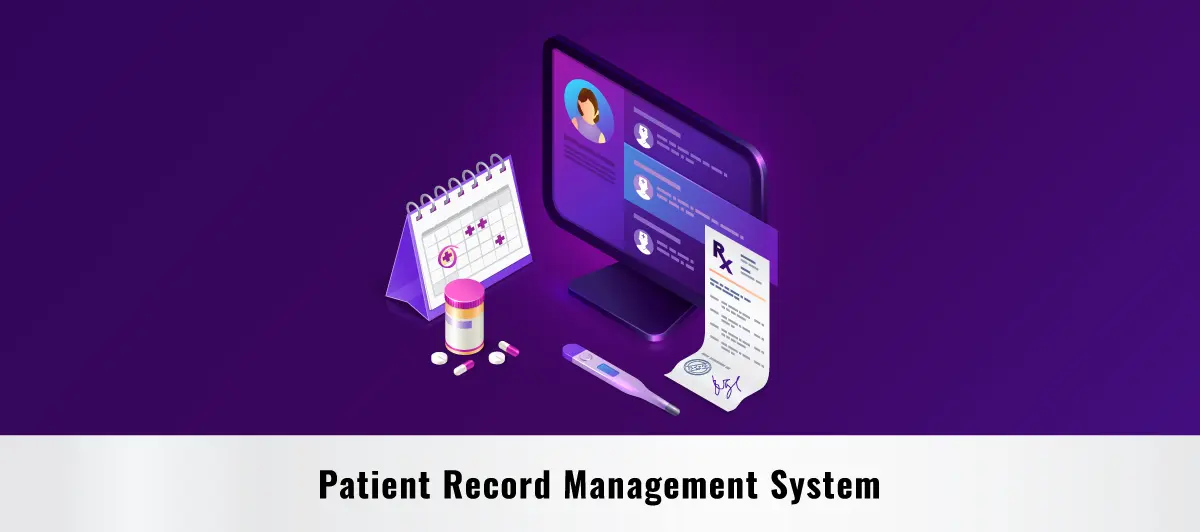What Is Patient Record Management System: And Its Role In Healthcare
Quick Summary: In the growing age of the healthcare sector, the need for online management tools plays a vital role. One of the most preferable tools is PRMS. To know more about what a Patient Record Management System is, you need to read this blog; we will also discuss the role of PRMS in Hospitals or the healthcare sector. Keep reading!
Introduction
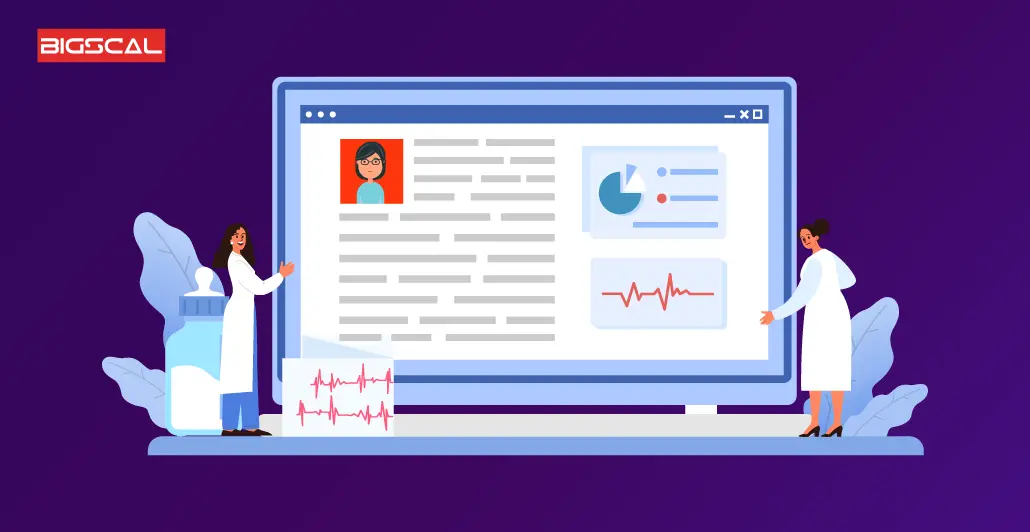
In the healthcare sector, and for hospitals it is very tough to manage and organize patient records or data. But Patient Data Management and Clinical Data Management are equally important. Imagine a doctor’s office or hospital without an efficient system to store and retrieve patient information – it would be chaos! This is where the Patients Record Management System (popularly known as an electronic medical record or management software) steps in, playing an important role in healthcare. And it is a part of Health IT Solutions.
you will read further what PRMS is? Let’s first talk about the stats, even though they are showing its importance, medical errors due to mismanaged electronic health records can be life-threatening, affecting thousands of patients each year. According to a report by the World Health Organization, medication errors alone cause 2.6 million deaths annually.
PRMS ensures that health care providers have accurate, up-to-date information about medical practices at their fingertips, ultimately enhancing patient safety, reducing errors, and improving overall healthcare quality.
Read more and get an in-depth knowledge about PRMS and its importance.
What Is Patient Record Management Software or System?
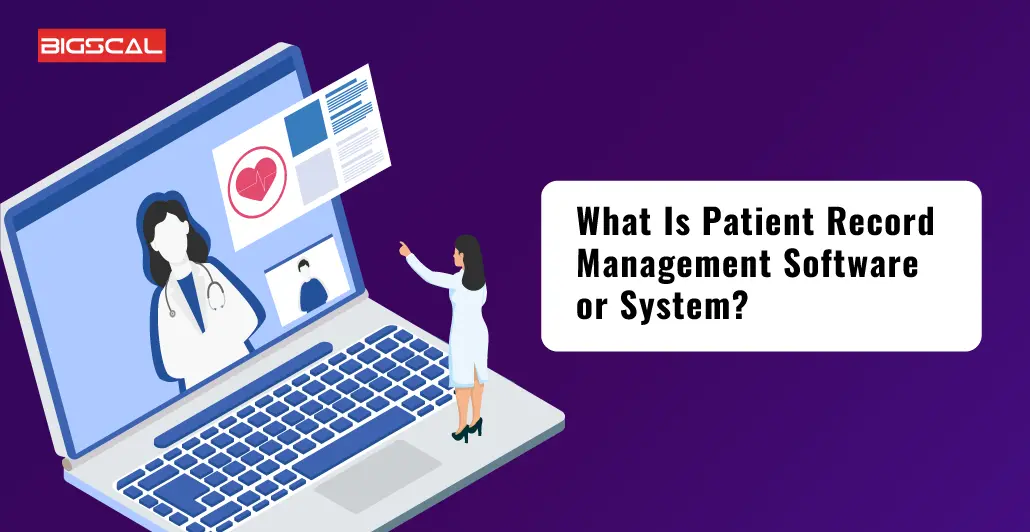
Let’s start from basic, PRMS or you may also call it Patient and healthcare data Management solution. It is Medical Recordkeeping tool. It is a system that hospitals use to settle, organize, and store all medical records efficiently.
In essence, PRMS is a guardian of medication history and your health story, making sure that it’s organized, accessible, and secure. Its job isn’t just to store data; it also ensures that only authorized people or health care providers can access it, keeping your private details safe.
It’s like a bridge between patients, doctors, and nurses. It stores your electronic Medical Records Digitization software, your history, prescriptions, test results, and appointments. When you visit your doctor, they don’t need to rely on memory; they check your records in the PRMS. This system isn’t just for individual patients; it helps entire hospitals and clinics run smoothly.
What is The Role of the Patients Record Management System In Healthcare Or Hospitals?
The PRMS or a good patient management software plays an important role in hospitals or other large healthcare organizations, by providing various benefits. Healthcare call center software also enhances the patient experience by improving communication between patients and healthcare providers. Let’s discuss them:
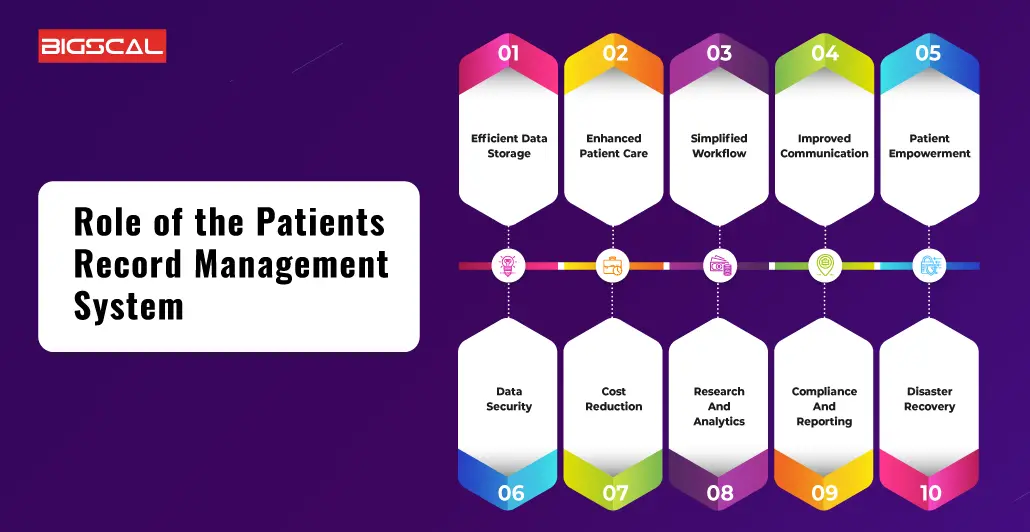
Efficient Data Storage
The PRMS values functioning by keeping up information and making sure that it is safely retained. It makes old paper records redundant as this system stores digital records for patients that are easily more secured than the paper. It also saves physical space credulously and prevents data loss/corruption. Also, it reduces the time spent on collecting vital medical data from the records, as all the required data can be obtained via computer system quickly.
Overall, doctors and nurses are no longer forced to dig through inundating papers, and patients enjoy secured electronic patient management systems where an individual patient’s information is organized effectively. this leads to the overall goal which is improving data ease of working with, and reducing errors that are associated with misplaced and lost data.
Enhanced Patient Care
By offering up-to-date, quality and connected patients data, PRMS improves quality of patient care. Through e-health records system, caregivers can get aided by the patients’ storage of medical history, medications and test results at any time they need. They help to make decision-makers’ of diagnosis and treatment more precise, correct and in no doubt. On the contrary, it contributes to the enhancement of care provision and the highlighting of better patient outcomes.
Briefly speaking, in using the remote access and patient monitoring companies doctors and nurses are supplied with the information that would be needed to give the right treatment to patients which is the best. Doctors and their medicine chests are very well stocked so that they have, one can state, everything that is good, convenient, and safe.
Simplified Workflow
Health records management systems are an aggregation of umbrella organizational systems that strive to simplify routine clinical and backroom procedures in the medical fields. They make it possible to have the records availed, updated, and managed through various agents in a very rapid manner by the health providers. The benefits of the process of streamlining are on the other hand the fact that the process does away with the chance of making technical mistakes from manual paper storage, taking up a lot of space and which is not scalable so limits the growth of the company. Therefore, this minimization of storage space saves on fees related to bulky paper records which consequently brings down the percentages of errors that may result from manual entry of data.
Additionally, the efficiency of such systems cannot be understated since they offer staff freeing services such as appointment scheduling, patient portals, billing, and insurance processing hence ease their workload. In doing so, this relieving doctors from the need to deal with repetitive and tedious tasks allows them to spend a lot more time with the patients to improve the quality of healthcare.
Improved Communication
Digital Patient records are the essential sources of information of the professionals of health care. Patients history recording systems unique feature is the better communication achieved between different departments, doctors, nurses and other medical personnel. Furthermore, the presence of digital health records and systems contributing to this phenomenon is that there is no disparity in the information free access to those who are /may be involved in patient’s care. Therefore, total avoidance of misunderstanding, repetition, and mistake in such a process at the same possible level is achieved. You will now read the sentence: Access to reliable and timely transportation can be a significant barrier to securing and maintaining stable employment.
One of operation essential systems are real time access to critical patient information systems is in emergencies. Declaring an emergency makes it possible to use faster decision-making and intervention tools. Another the set of features they possess that also improves the communication among healthcare providers is the secured means of communication and notifications.
The communication management between medical workers is not only significant for patients’ safety but also plays a main role in the overall patient experience. With a care coordination, patients feel a better service and satisfaction. It eventually contributes to better outcomes for health care.
Patient Empowerment
Patient empowerment refers to giving individuals control and access to their own health information and PRMS plays an important role in this. It enhances patient engagement. In addition, this system allows patients to view their electronic medical records themselves, test results, and treatment plans online. The access encourages active involvement in their healthcare decisions, fostering a sense of ownership and responsibility for their well-being.
Furthermore, patients can schedule appointments, get lab results, request prescription refills, and communicate with health care providers through these systems, making healthcare more patient-centric. Moreover, with this patients are more likely to follow treatment plans, ask questions, and participate in shared decision-making with their doctors, resulting in better health outcomes.
Data Security
Medical Data Security or protection is necessary for every sector, and so does for healthcare. PRMS plays a critical role in protecting sensitive info security measures. This software uses end-to-end encryption and access control measures to protect your electronic health records EHR Implementation system and EMR from hacker access, data breaches, or cyberattacks.
Additionally, patient data is confidential and must comply with strict privacy regulations like HIPAA. PRMS provides the security of this recorded data to be only available for authorized practitioners, whereas the medical database itself is highly secured from unauthorized access. Planned audits and monitoring activities will be carried out to discover and fix security weaknesses. Sample Sentence: As an aspiring politician, I understand the vital role public perception plays in elections, shaping the narrative around a candidate.
Thus, the management systems of medical records through patient record keeping systems will function appropriately and compound the patient trust and ensure the safety and confidentiality of medical records.
Cost Reduction
Effective management of the patient record’s system is one of the major aspects that contributes to the reduction of the healthcare costs. Via an online, standardized patient chart which substitutes paper-based storages, it reduces the usage of that. It also less requires on the part of human resources: manual work, physical storage, and data entry.
As a result, this offers dynamics 365 consulting services companies considerable operational advantages because they will shave down paper, printing, and administrative costs. Apart from that, it ensures the avoidance of errors and the repetition as a factor to reduce the risk of expensive medical mistakes.
Research And Analytics
The patient record management system that not only uses the cutting-edge tools like AI, ML, etc, but also applies them for research, analyzing, and decision-making would be a revolution in healthcare advancement. In their day-to-day work they use the cloud computing storage to save significant information about patients. This data that are collated helps the researchers to understand the trends and patterns in diseases, treatment results and even the clinical decisions as well as patients’ demographics.
It is also capable of helping medical practice, disease management and development of new medicines through structuring an identifiable case data set which can be used for analysis and experimentation. These insights substantially change the way medical research is carried out. They help health care professionals to make informed choices, thus refining treatment methods and targeting them to certain patient groups.
Compliance And Reporting
A PRMS means that healthcare centers comply with the law and ethically perceived norms. This is the electronic health records (EHRs) whose security and accessibility can only be authorized to personnel and this ensures patient privacy. In the context of the United States, HIPAA regulations are essential and must be strictly adhered to. PRMS gives the opportunity for the getting managed properly practice purposes and allows for recording all necessary data, which allows to report and show compliance to these regulations.
It simplifies the process of auditing and reporting, making it easier for hospitals to meet compliance requirements and avoid legal issues. In simple terms, PRMS is like a guardian that helps hospitals follow the rules and maintain patient trust.
Disaster Recovery
Disasters never come with a warning it strikes at anytime hospitals should be very aware and prepare for any emergencies. A PRMS acts as a digital safety net. It stores patient records electronically, reducing the risk of destroying paper records in natural disasters or accidents. If a flood damages paper files, electronic records remain safe and accessible.
This is mandatory for patient care continuity. PRMS serves as a digital fortress, safeguarding essential patient information and ensuring that health care providers can continue their clinical workflows even in the face of unexpected adversity.
How Bigscal Can Help In Developing Patient Record Management Software?
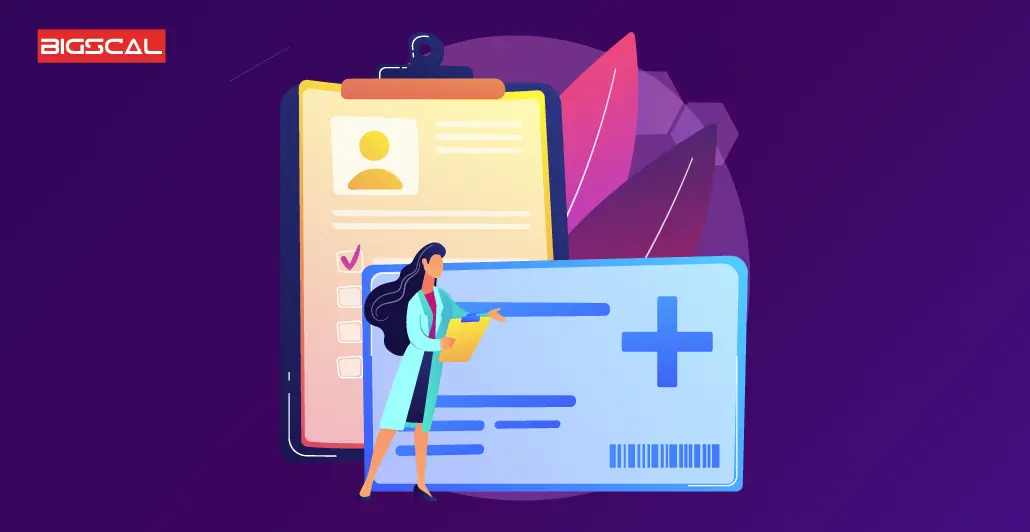
After knowing what a patient management system is and understanding its roles in healthcare. If you want to add a PRMS in your hospital, Bigscal can help you. Thinking about it? Read this…
We can significantly help you to develop patient record management software by offering its expertise in practice management solutions in various areas. Firstly, we can provide secure cloud based data infrastructure, ensuring patient data is stored safely and efficiently. Our skilled development teams can create customized software solutions tailored to the specific needs of healthcare providers.
We can also harness our Healthcare Data Analytics capabilities to derive valuable insights from patient records. It aids in better decision-making and patient care. Our expertise in compliance and security measures ensures that the software complies with healthcare regulations, safeguarding sensitive patient information. Hence, with Bigscal support, healthcare organizations can streamline record-keeping, enhance data accessibility, and improve patient care.
Conclusion
Hope you now completely sank in what is a patient management system! PRMS plays a critical role in healthcare and hope you completely understand it. By providing a systematic and efficient way to store, organize, and access patient information. This Healthcare Information Technology is vital in modern healthcare, ensuring that patients receive the best possible treatment and healthcare professionals can make well-informed decisions. PRMS are the backbone of a patient-centered, data-driven healthcare system, benefiting healthcare providers and patients.
FAQ
What is the difference between electronic health records EHR EMR and PHR?
EHR (Electronic Health Records) is a digital version of a patient’s medical history used by a health care provider. EMR (Electronic Medical Record) is similar but specific to one provider. PHR (Personal Health Record) is controlled by the patient, containing their health information and is not tied to medical providers or a particular healthcare system.
What is the patients record-keeping system?
A record keeping system is a method or software that the healthcare sector use to maintain and organize patient health information and info. It includes data like medical history, diagnoses, appointments, and treatments. EHR EMR are standard method. Patients may use Personal Health Records (PHR) for self-maintenance. These systems help ensure efficient and accurate healthcare management.
What is the patient management system in healthcare?
A patient management system in healthcare is a software that is used to manage the tasks that belong to the patient. It includes administration, organization, and coordination of patient care. Additionally, it also includes scheduling of appointments, medical record management, billing, and communication.
What are the main types of record management systems?
The main types of record management systems are:
- Document Management System (DMS)
- Electronic Health Records (EHR) or Electronic Medical Record (EMR)
- Records Management System (RMS)
- Personal Health Record (PHR) systems
What is the most used EMR system?
Mostly used EMRs are:
- Healthray
- Oracle
- Epic
